Qualcomm’s New 3rd Generation Snapdragon X60 5G Modem, Built on 5nm
by Dr. Ian Cutress on February 18, 2020 7:30 AM EST- Posted in
- Smartphones
- Qualcomm
- 5G
- mmWave
- Modem
- Sub 6 GHz
- Snapdragon X60
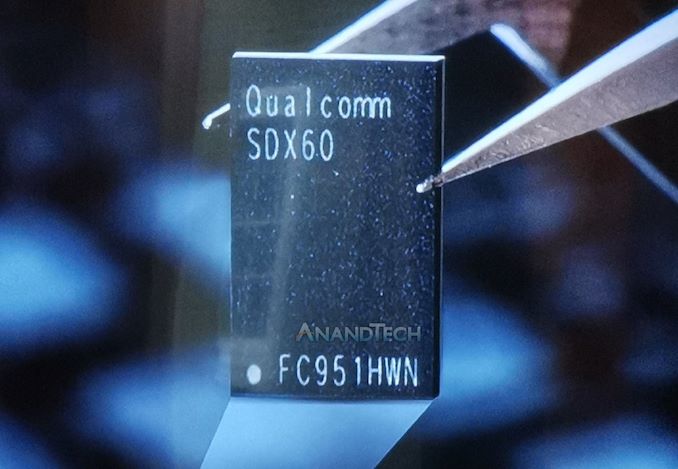
To date Qualcomm has promoted two key standalone 5G modems for widespread adoption: the Snapdragon X50 and the Snapdragon X55. Today the company is disclosing details on its upcoming 3rd generation 5G modem design, the Snapdragon X60, which is being promoted as the premium offering for smartphones, industrial, and commercial designs that require a discrete 5G modem. Key features of this modem include the fact that it is built on a 5nm process, supports carrier aggregation between Sub-6 and mmWave, and offers up to 7.5 Gbps download speeds.
The fact that Qualcomm is outright saying that their modem is going to be built on 5nm at this point of the game is very interesting, especially given TSMC’s recent disclosures on the capability of its 5nm process and its current timeline of development.
With the Snapdragon X60, Qualcomm is promoting support for more features of 5G, such as carrier aggregation between Sub-6 GHz bands in FDD/TDD (similar to LTE carrier aggregation), and support for simultaneous carrier aggregation between Sub-6 GHz and mmWave 5G bands. This leads to big jumps in peak bandwidth support, with Qualcomm listing up to 7.5 Gbps download over mmWave, 3 Gbps upload, and up to 5 Gbps download over Sub-6 GHz.
These peak speeds with the X60 modem is going to be achieved through new mmWave antenna modules. For the X50/X55, Qualcomm introduced its QTM525 module for mmWave, in a slim packaging to help enable the technology. Despite the sleek stature, the X50/X55 modems supported four of these modules, and Qualcomm recommended a minimum of three – the replacement of which did require these devices to be of a specific minimum thickness to ensure complete coverage. The new QTM535 module is promoted to be thinner, reducing that requirement.
Unfortunately the diagram showed by Qualcomm of the new module (as they didn’t have a physical one to show us) was not to scale, so no real conclusions could be drawn to the old module. Qualcomm also stated that they were not discussing dimensions at this time, despite the fact that the QTM525 launch was all about the dimensions. The new module can support 26 GHz, 28 GHz, and 39 GHz, enabling wider support. Qualcomm is going to keep its recommendation to vendors to use at least 3 in a connected device.
Alongside the modem and the mmWave antenna, Qualcomm is also offering the full RF front end for Sub-6 GHz. Qualcomm was proud to promote last year at its Tech Summit that out of the 150 devices that were using X50/X55 modems, all of them were using Qualcomm’s RF front-end solution. The X60 will similarly be a full stack offering.
Rollout of Qualcomm’s 5G modems has been a varied affair, with the time between the initial announcement of the first generation X50 and it actually launching into consumer devices being around two years. The process was sped up with X55, with a quicker time to market and eventually widespread deployment for consumer devices through the end of 2019 and likely for all of 2020. There was no doubt that Qualcomm was going announce its next generation design at some point, and with X55 in full swing, that time would appear to be now. When asked regarding timeframe of the X60, Qualcomm stated that they’re not sticking to any timeframe, with a spokesperson saying ‘these things go through revisions’. It is worth noting that for 5nm, TSMC has not yet entered high-volume manufacturing on this node yet (it will do soon, but yields are still low according to the ISSCC 2019 disclosure in December), and Samsung is further behind. So the exact timeframe for X60 rollout maybe sometime in 2021 at our best guess. Qualcomm has an annual Tech Summit in December, so we might see some of the first X60 reference designs at that event, likely with early silicon or the first batches of production silicon.
With MWC now cancelled, we might expect to see updates to the Snapdragon X60 news later in the year, perhaps at IFA in late August, or at Qualcomm’s own 5G analyst event. Then there’s always the Tech Summit in December.


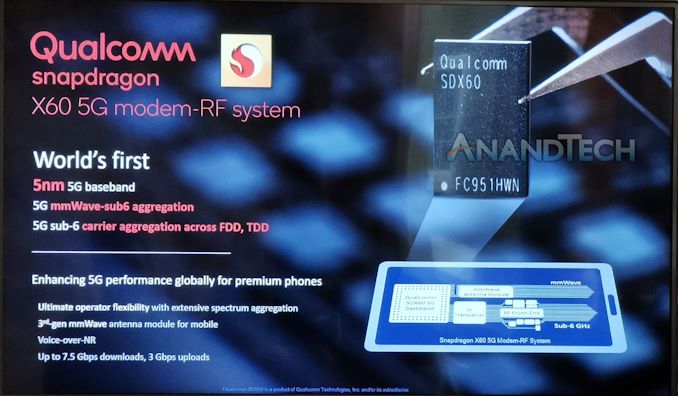
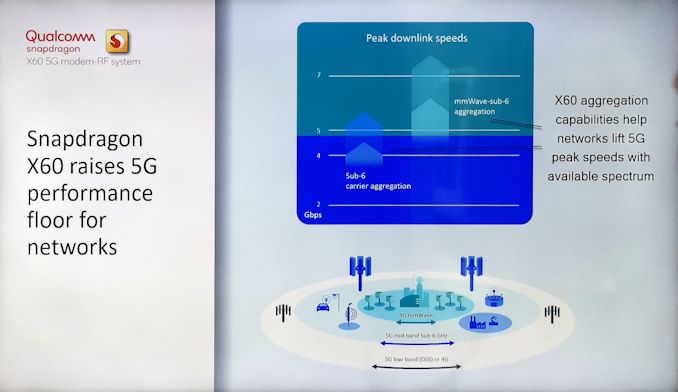
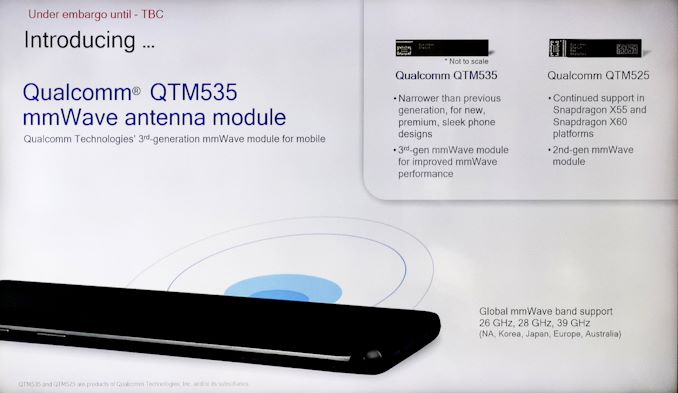
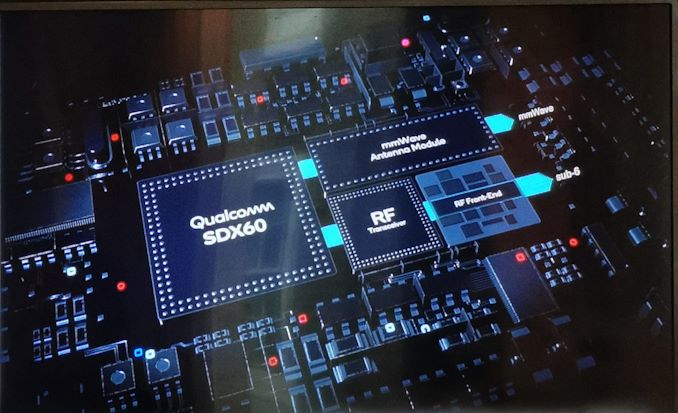
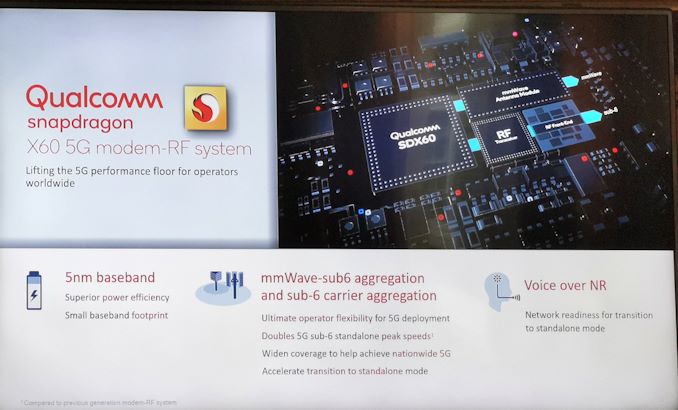








50 Comments
View All Comments
peevee - Tuesday, February 18, 2020 - link
The whole mmWave thing is a fraud.Best regards,
Physics.
s.yu - Tuesday, February 18, 2020 - link
True, and they still seem to be brute forcing what's already overkill--none of the carriers around the world will provide service saturating the peak capacity of the X55 in the next few years.s.yu - Tuesday, February 18, 2020 - link
...if ever, I mean. It's not like the 4G modems have reached their limits now that people are already being pushed from 4G to 5G, this could very well happen to 5G too.Whiteknight2020 - Tuesday, February 18, 2020 - link
Those feeds and speeds are irrelevant to the real market, which is edge aggregation, AI, inferencing, surveillance systems etc.s.yu - Wednesday, February 19, 2020 - link
Then what is relevant? What significant advantage does 5G claim over 4G that's not speed or latency based?peevee - Wednesday, February 19, 2020 - link
Fraud in mmWave is not about saturation, it is about physics - specifically, power requirements to emit it (which is proportional to frequency for those who have forgotten high school ph), and the inability of those specific frequencies to penetrate anything in the real world, even fog, let alone your head.peevee - Wednesday, February 19, 2020 - link
That is what I mean:https://upload.wikimedia.org/wikipedia/commons/1/1...
Look at the right side of the graph, near 10mm.
s.yu - Wednesday, February 19, 2020 - link
...that too. All the while "6G" claims to use even higher frequencies.ijdat - Saturday, February 22, 2020 - link
Nobody's claiming that mmwave has the same range as lower frequencies, but that's not the purpose -- it's there to give high data rates in dense usage areas with lots of basestations (or rmote radio heads if you want to be precise). Fog or rain have little effect over ranges of a few hundred meters which is the target, buildings have a far bigger effect. Of course you might be right and all the hundreds of expets on radio propagation who've been working non-stop on 5G might be wrong, but I wouldn't put money on it ;-)wrkingclass_hero - Wednesday, February 19, 2020 - link
I can't be the only one who is perplexed by Qualcomm's slides being watermarked by Anandtech. Those are Qualcomm's slides that they showed to the media, they are not Anandtech properties. I find it questionable and objectionable.